

Journey to the West Research
A repository for research on the great 16th-century chinese classic, the story of sun wukong, the monkey king.
One of the most famous primate characters in world literature appears in the great Chinese classic Journey to the West ( Xiyouji , 西遊記 , 1592 CE). The story follows the adventures of Sun Wukong (孫悟空, a.k.a. “Monkey”) (fig. 1), an immortal rhesus macaque demon, who gains extraordinary power via spiritual cultivation and rebels against the primacy of heaven. Like Loki in Norse mythology and Lucifer in Judeo-Christian mythology, this trickster god falls from grace when a supreme deity, in this case the Buddha , banishes him to an earthly prison below. But unlike his western counterparts, the monkey repents, becoming a monk and agreeing to use his abilities to protect a Buddhist priest on his journey to collect sutras from India.
What follows is an overview of Monkey’s story. It will primarily focus on the first seven of the novel’s 100 chapters, but chapters eight through 100 will be briefly touched upon, along with lesser-known literary sequels to Journey to the West . I will also discuss the novel’s impact on pop culture and religion.
In the beginning, the mystical energies of heaven and earth and the light of the sun and moon come together to impregnate a boulder high atop the Mountain of Flowers and Fruit ( Huaguo shan, 花果山), an island that lies to the east of the easternmost continent in the Buddhist disc world system. The stone gestates for countless ages until the Zhou Dynasty (1046-256 BCE), when it hatches a stone egg that is eroded by the elements into a simian shape. The Stone Monkey ( Shihou, 石猴) awakens and bows to the four cardinal directions as light bursts forth from his eyes. The light is so bright that it reaches heaven, alarming the Jade Emperor ( Yuhuang dadi, 玉皇大帝) and his celestial retinue. The light soon subsides, however, once he ingests food for the first time.
The Stone Monkey happens upon other primates on the island and becomes their king when he proves himself in a test of bravery by blindly leaping through a waterfall, thereby discovering a long-forgotten immortal’s cave. He rules the mountain for over three centuries before the fear of death finally creeps in. One of his primate advisors suggests that the king finds a transcendent to teach him the secrets of eternal life, and so Monkey sets sail on a makeshift raft and explores the world for ten years. His quest eventually takes him to the western continent , where he is finally accepted as a student by the Buddho-Daoist sage Subodhi ( Xuputi, 须菩提). He is given the religious name Sun Wukong , meaning “ monkey awakened to emptiness ” or “monkey who realizes sunyata .” The sage teaches him the 72 methods of earthly transformation , or endless ways of changing his shape and size; cloud somersaulting , or a type of flying that allows him to travel 108,000 li (33,554 mi / 54,000 km) in a single leap; all manner of magical spells to call forth gods and spirits, grow or shrink to any size, part fire and water, create impassable barriers, conjure wind storms, cast illusions, freeze people in place, make endless clones of himself , unlock any lock, bestow superhuman strength , bring the dead back to life, etc.; traditional medicine ; armed and unarmed martial arts ; and, most importantly, an internal breathing method that results in his immortality. He is later disowned by the sage for selfishly showing off his new found magical skills to his less accomplished classmates.
Sun eventually returns to his cave and faces a demon who had terrorized his people during his prolonged absence. After killing the monster, he realizes that he needs a weapon to match his celestial power, and so his advisor suggests that he go to the undersea palace of Ao Guang (敖廣), the Dragon King of the Eastern Sea. There, he tries out several weapons weighing thousands of pounds, but each one is too light. He finally settles on a massive nine-ton iron pillar that was originally used by Yu the Great ( Dayu, 大禹) to set the depths of the fabled world flood, as well as to calm the seas . Named the “ As-You-Will Gold-Banded Cudgel ” ( Ruyi jingu bang, 如意金箍棒), the iron responds to Sun’s touch and follows his command to shrink or grow to his whim, thus signifying that this weapon was fated to be his. In addition to the staff, Monkey bullies the Dragon King’s royal brothers into giving him a magical suit of armor .
Shortly after returning home to the Mountain of Flowers and Fruit, he shows off his new weapon by turning into a frightful cosmic giant and commanding the staff to grow, with the top touching the highest heaven and the bottom the lowest hell. This display of power prompts demon kings of the 72 caves to submit to his rule and host a drunken party in his honor. Soon after falling asleep, Sun is visited by two psychopomps who drag his soul to the Chinese underworld of Diyu (地獄). There, he learns that he was fated to die at the allotted age of 342 years old. But this enrages Monkey since his immortality freed him from the cycle of rebirth, and so he bullies the kings of hell in to bringing him the ledger containing his info. He promptly crosses out his name with ink, as well as the names of all monkeys on earth, thus making them immortal, too. He wakes up in the mortal world when his soul returns to his body.

Fig. 1 – A modern depiction of Sun Wukong (by the author) ( larger version ).
Both the Eastern Dragon King and the Hell King Qinguang (秦廣王) submit memorials to heaven concerning Sun’s misconduct. But the court advisor, an embodiment of the planet Venus , convinces the Jade Emperor to give Sun the menial task of watching over the Heavenly Horses in order to avoid further conflict. Monkey accepts and steadfastly performs his duties, that is until he learns that he’s just a glorified stable boy. He immediately returns to his earthly home in rebellion to proclaim himself the “Great Sage Equaling Heaven” ( Qitian dasheng, 齊天大聖). The celestial realm mobilizes an army of powerful demon hunters, including the Heavenly King Li Jing ( Li Jing tianwang, 李靖天王) and his son, the child god Third Prince Nezha ( Nezha santaizi , 哪吒三太子), but they all fall to Monkey’s magical and martial might. The embodiment of the planet Venus once again steps in to convince the Jade Emperor to acquiesce to Monkey’s demand for higher rank, thereby granting him the empty title of Great Sage Equaling Heaven and even promoting him to watch over the immortal peach groves.
Sun takes stock of the magical peaches that ripen every few thousand years, but he eventually succumbs to their heavenly aroma. He eats all but the youngest life-prolonging fruits, thus gaining another level of immortality. His theft is soon discovered, however, when fairy attendants of the Queen Mother of the West ( Xiwangmu, 西王母) arrive to pick the choicest specimens for her long-awaited immortal peach banquet. Sun is alerted to there presence and, upon questioning, learns that he has not been invited. Naturally, Sun becomes enraged, freezing the maidens in place with fixing magic and then crashes the party before the hallowed guests arrive. He eats all of the celestial food and drinks all of the immortal wine, and then drunkenly stumbles into the laboratory of Laozi (老子), a high god of Daoism. There, he gobbles up the deity’s alchemically-derived elixir pills , thereby adding several more levels of immortality.
Sun returns home once again to await the coming storm of heavenly forces. Tired of the demon’s antics, the Jade Emperor calls up 72 heavenly generals, comprising the most powerful Buddhist and Daoist gods, and 100,000 celestial soldiers. In response, Monkey mobilizes his own army comprising the demon kings of the 72 caves and all manner of animal spirits, including his own monkey soldiers. But soon after the battle commences, the demon kings fall to heavenly troops, forcing Sun to take on three heads and six arms and multiply his iron cudgel to meet the onslaught. Once again, the heavenly army is no match for him. However, he soon loses his nerve when his monkey children are captured in great heavenly nets. He flees with Erlang ( Erlang shen, 二郎神), a master of magic and the nephew of the Jade Emperor, taking chase. The two battle through countless animal transformations , each trying to one-up the other. Monkey is finally captured when Laozi drops a magical steel bracelet on his head, incapacitating him long enough for Erlang’s celestial hound to bite hold of his leg.
Sun is taken to heaven to be executed for his crimes, but fire, lightning, and edged weapons have no effect on his invincible body. Laozi then suggests that they put him inside of the deity’s alchemical furnace to reduce the demon to ashes. They check the furnace 49 days later expecting to see his rendered remains; however, Monkey jumps out unscathed, having found protection in the wind element ( xun , 巽) of the eight trigrams . But intense smoke inside the furnace had greatly irritated his eyes, refining his pupils the color of gold and giving them the power to recognize the dark auras of demons in disguise. He overturns the furnace and begins to cause havoc in heaven with his iron cudgel. The Jade Emperor beseeches the Buddha ( Rulai, 如来) in the Western Paradise to intervene.
The Tathagata appears and declares that he will make Sun the new ruler of heaven if the macaque can simply jump out of his palm. Monkey agrees to the wager, and with one tremendous leap, speeds towards the reaches of heaven. He lands before five great pillars, thinking them to be the edge of the cosmos. He tags one with his name and urinates at the base of another in order to prove that he had been there. Upon returning, Sun demands the throne; however, the Buddha reveals that the five pillars were actually his fingers, meaning that the Great Sage had never left. But before Monkey can do anything, the Tathagata overturns his hand, pushing it out the gates of heaven, and transforming it into the Five Elements Mountain ( Wuxing shan, 五行山). There, Sun is imprisoned for his crimes against heaven.
Chapters thirteen to 100 tell how six hundred years later Sun is released during the Tang Dynasty (618-907) to help escort the Buddhist monk Tripitaka ( Sanzang, 三藏) (whose early story is told in chapters eight to twelve), a disciple of the Buddha in a previous life , on a quest to retrieve salvation-bestowing scriptures from India. The Bodhisattva Guanyin (觀音) gives the monk a golden headband ( jingu, 金箍; a.k.a. jingu , 緊箍, lit: “tight fillet”) as a means to rein in Monkey’s unruly nature. It tightens around Sun’s head whenever a magic formula is recited , causing him great pain. In addition, Guanyin gives Monkey three magic hairs on the back of his neck that can transform into anything he desires to aid in his protection of the monk. Along the way, the two meet other monsters-turned-disciples— Zhu Bajie (猪八戒), the lecherous pig demon, Sha Wujing (沙悟净), the complacent water demon, and the White Dragon Horse ( Bailongma, 白龍馬), a royal serpent transformed into an equine—who agree to aid in the monk’s defense. Monkey battles all sorts of ghosts, monsters, demons, and gods along the way. In the end, he is granted Buddhahood and given the title of the “ Victorious Fighting Buddha ” ( Dou zhanzheng fo, 鬥戰勝佛) for protecting Tripitaka over the long journey.
A summary of all 100 chapters can be read on my friend’s blog (fig. 2).
https://journeytothewestlibrary.weebly.com/novel-summary

Fig. 2 – The summary header ( larger version ).
II. Sequels
There are a total of four unofficial sequels to the novel.
The first is called A Supplement to the Journey to the West ( Xiyoubu, 西游补, 1640), which takes place between chapters 61 and 62 of the original. In the story, the Monkey King wanders from one adventure to the next, using a magic tower of mirrors and a Jade doorway to travel to different points in time. In the Qin Dynasty (221–206 BCE), he disguises himself as Consort Yu in order to locate a magic weapon needed for his quest to India. During the Song Dynasty (960–1279), he serves in place of King Yama as the judge of Hell. After returning to the Tang Dynasty, he finds that his master Tripitaka has taken a wife and become a general charged with wiping out the physical manifestation of desire (desire being a major theme running through the novelette). Monkey goes on to take part in a great war between all the kingdoms of the world, during which time he faces one of his own children in battle. In the end, he discovers an unforeseen danger that threatens Tripitaka’s life.
The second is the Later Journey to the West ( Hou Xiyouji , 後西遊記, 17th-century). This novel focuses on the adventures of Monkey’s spiritual descendent Sun Luzhen (孫履真, “Monkey who Walks Reality”). I have a three-part article about it ( first , second , and third ).
And the third and fourth are the Continuation of the Journey to the West ( Xu Xiyouji , 續西遊記, 17th-century) and the New Journey to the West ( Xin Xiyouji , 新西遊記, 19th-century), respectively. As of 2023, I have not written any articles on these sequels.
III. Cultural Impact
Stories about Sun Wukong have enthralled people the world over for centuries. His adventures first became popular via oral folktale performances during the Song Dynasty (960-1279). These eventually coalesced into the earliest known version of the novel, The Story of How Tripitaka of the Great Tang Procures the Scriptures ( Da Tang Sanzang qujing shihua , 大唐三藏取經詩話; The Story hereafter), published during the late-13th-century.
Since the anonymous publishing of the complete novel in the 16th-century, Monkey has appeared in numerous paintings, poems, books, operatic stage plays, video games, and films (both live action and animated ).
He was sometimes “channeled,” along with other martial spirits, by citizen soldiers of the anti-foreign Boxer Rebellion (1899-1901). There is also a monkey-based martial art named in his honor.
It is interesting to note that there are people in southern China , Taiwan , Malaysia , Singapore , Thailand , and Vietnam who worship him as a patron deity . Thus, Sun became so popular that he jumped from oral and published literature to take his place on the family altar.
Copies of The Story were discovered in Japan among a 17th-century catalog of books in the Kozanji Temple (高山寺, Ch: Gaoshan si ). No copies are known to exist in China, which suggests this version came to the island many centuries ago. The complete Ming edition of the novel came to Japan in the late-18th-century, where it was translated in bits and pieces over the course of some seventy years. However, Monkey did not become immensely popular until the first complete translation of the novel was published in 1835. The last part was illustrated with woodblocks by Taito II (fl. 1810-1853), a noted student of famous artist Hokusai (1760-1849).
Other Japanese artists, such as Kubo Shunman (1757-1820) and Yoshitoshi (1839-1892) (fig. 3), produced beautiful full color woodblock prints of Sun.

Fig. 3 – (Left) Tsukioka Yoshitoshi, “Jade Rabbit – Sun Wukong”, October 10, 1889 ( larger version ). Fig 4. – (Right) Son Goku ( 孫悟空 ) from the Dragonball Franchise ( larger version ).
Like in China, Monkey has been adapted in all kinds of Japanese media. By far, his most famous adaptation is the manga and anime character Son Goku (孫悟空) (fig. 4) from the Dragon Ball (Jp:ドラゴンボール; Ch: Qi longzhu, 七龍珠) franchise (1984-present). Like Sun, Goku has a monkey tail, knows martial arts, fights with a magic staff, and rides on a cloud. His early adventures in Dragon Ball (manga: 1984-1995; anime: 1986-1989) see him traveling the world in search of seven wish-granting “dragon balls,” while also perfecting his fighting abilities and participating in a world martial arts tournament. Several of the supporting characters, such as Oolong (ウーロン), a lecherous anthropomorphic pig who can change his shape, a nod to Zhu Bajie, were directly influenced by the novel. Dragon Ball Z (manga: 1988-1995; anime: 1989-1996), a continuation of the comic book and animated TV show, follows Goku as an adult and reveals that he is actually a humanoid alien sent as a child to destroy Earth. He arrived in a spherical spaceship that recalls the stone egg from which Sun Wukong was formed. But instead of destroying the planet, he becomes its stalwart protector and faces extraterrestrial menaces from beyond the stars. Goku’s adventures have continued in the sequels Dragon Ball GT (1996-1997), Dragon Ball Super (2015-2018), and Super Dragon Ball Heroes (2018-present).
Share this:
7 thoughts on “ the story of sun wukong, the monkey king ”.
- Pingback: Journey to the West and the Senzu Beans of Dragon Ball | Journey to the West Research
- Pingback: Everything We Know About Black Myth: Wukong – NEWSCLE
- Pingback: Shangri La Abugi : TastyFaith
- Pingback: Aux origines de Son Gokû, le Roi Singe - Echo Des Mondes
- Pingback: Sun Wukong | The Monkey King - GuestGram
was Goku based off the monkey king. And was the hole dragon ball series based off chinse myths.
Yes, Goku was based on the Monkey King, but the early part of Goku’s childhood was only loosely based on Journey to the West.
Leave a Reply Cancel reply
Discover more from journey to the west research.
Subscribe now to keep reading and get access to the full archive.
Type your email…
Continue reading

Journey to the West | Full Story, Summary & Moral Lessons
- February 19, 2024
“Journey to the West” stands as one of the pinnacles of Chinese literature, a riveting blend of mythology, folklore, humor, and spirituality .
Authored by Wu Cheng’en in the 16th century during the Ming dynasty, this epic novel has transcended its cultural origins to become a global literary treasure!
The narrative follows the perilous journey of the Buddhist monk Xuanzang, historically known, as he travels to India to obtain sacred Buddhist scriptures. Accompanied by his three disciples— Sun Wukong , Zhu Bajie, and Sha Wujing—each with their own unique abilities, their quest is filled with divine interventions, battles with demons, and moral lessons.
Many of which we will be getting to know today!
Table of Contents
Historical Context
The “Journey to the West” is deeply entwined with the real-life travels of Xuanzang (602-664 CE), whose pilgrimage to India and back took 17 years, a journey undertaken to obtain authentic Buddhist scriptures.
Wu Cheng’en’s fictionalized account, however, does more than narrate a religious quest; it weaves a rich story of Chinese myths, Taoist and Buddhist philosophy, and satirical commentary on the social issues of his time, making it a multifaceted work of art.
If you’re interested in watching the Journey to the West, I highly recommend the 1986 series as it’s often lauded as being not only the most accurate but also you can really feel the love and respect given to the adaptation.
Key Characters
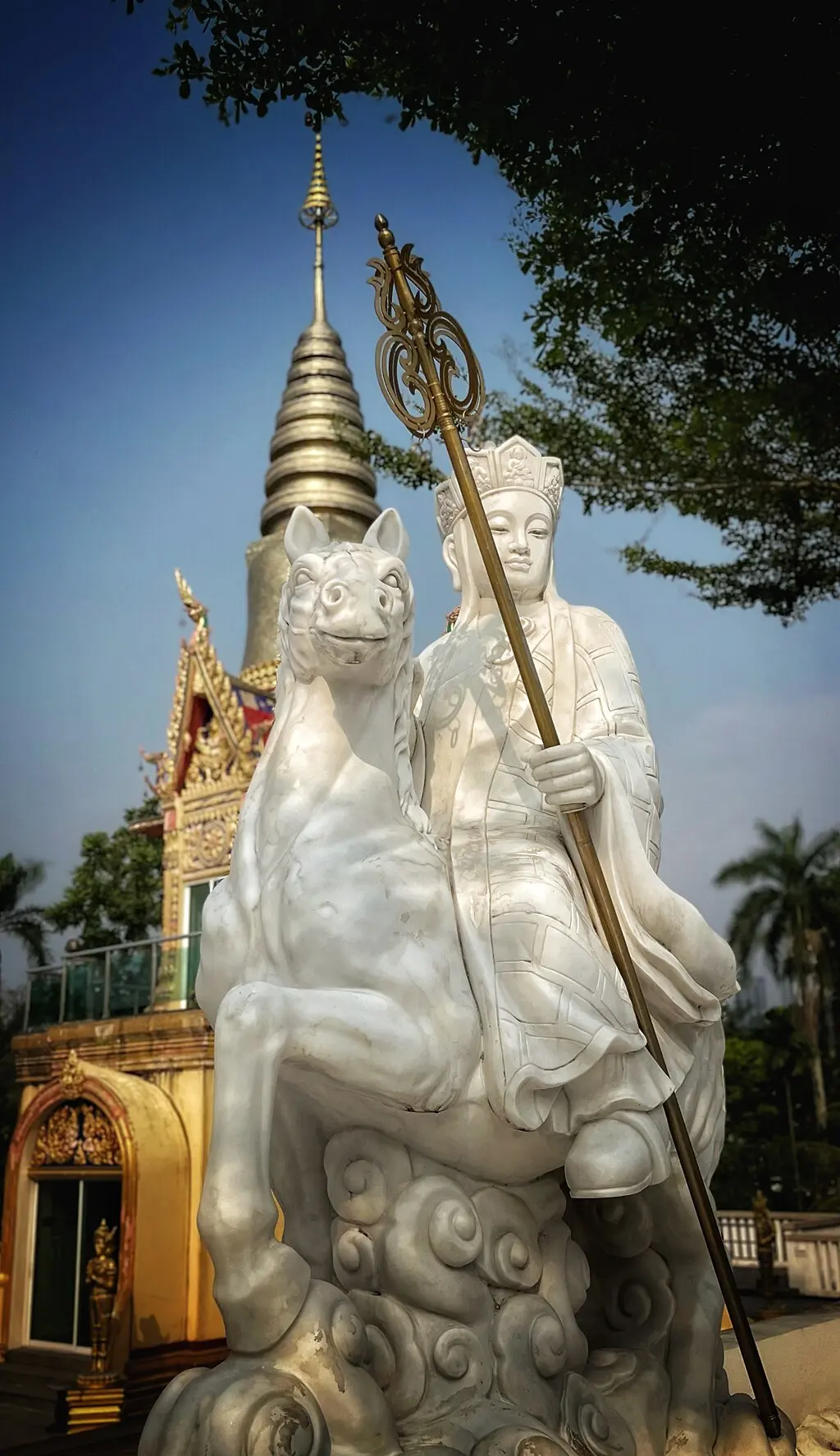
Tang Sanzang
Tang Sanzang, also known as Tripitaka , stands at the heart of “Journey to the West” as its protagonist. His mission to retrieve sacred Mahayana Buddhist scriptures from India serves as the narrative’s driving force. Tang Sanzang embodies virtues such as humility, compassion, and unwavering dedication to his spiritual quest.
His portrayal as the epitome of piety and moral integrity offers a rich canvas against which his interactions with disciples and various challenges unfold.
Tang Sanzang’s personality is a blend of devout faith and moral steadfastness. He is the moral compass for his disciples, guiding them not only towards their external goal but also on their internal journeys of growth and enlightenment .
Despite his virtues, Tang Sanzang is not portrayed as infallible. His naivety and strict adherence to religious doctrines sometimes lead him into trouble, requiring rescue by his more worldly and powerful disciples. This aspect of his character highlights the novel’s exploration of the balance between innocence and wisdom, as well as the necessity of worldly knowledge in achieving spiritual goals.
Throughout the novel, Tang Sanzang undergoes significant development. His journey is not only a physical one across dangerous terrains but also a spiritual odyssey that tests and refines his character. He learns to balance his strict moral codes with the practicalities of the world, growing in understanding and compassion towards his disciples and the beings they encounter.
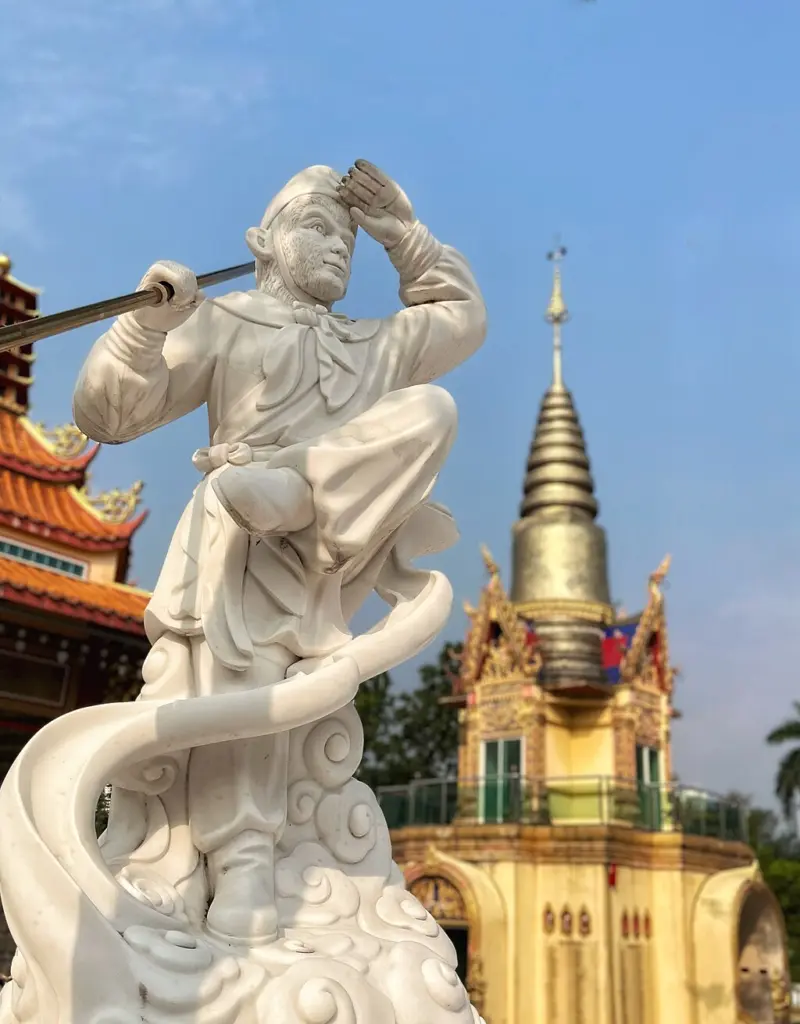
Sun Wukong , famously known as the Monkey King , is one of the most beloved characters in “Journey to the West.”
His origins are as magical as his personality; born from a stone egg on the Mountain of Flowers and Fruit, Sun Wukong acquires supernatural powers through Taoist practices.
His abilities include shape-shifting, immense strength, and the ability to travel vast distances in a single somersault. Despite his powers, Sun Wukong’s early journey is marked by rebellion and pride, leading him to challenge the heavens themselves.
His initial defiance against the celestial order and subsequent punishment—being imprisoned under a mountain by the Buddha—sets the stage for his redemption arc.
His release by Tang Sanzang and commitment to protect the monk on the journey to India is a turning point, marking his transition from a rebellious figure to a devoted disciple. This journey serves as a path of self-discovery and spiritual maturation for Sun Wukong, as he confronts challenges that test his ingenuity, patience, and fidelity.
The Monkey King’s personality is multifaceted; he is cunning and playful, yet capable of profound wisdom and bravery. His loyalty to Tang Sanzang is unwavering, and he becomes the monk’s most powerful protector, using his abilities to overcome demons and obstacles that the pilgrimage encounters. Sun Wukong’s transformation from a mischievous troublemaker to a protector embodies the novel’s themes of redemption and the possibility of spiritual growth regardless of one’s past.
In terms of symbolic significance, Sun Wukong represents the untamed mind and the potential for enlightenment within all beings. His journey from arrogance to enlightenment mirrors the Buddhist path, emphasizing the importance of humility, learning, and devotion.
Through Sun Wukong, “Journey to the West” explores the idea that even the most unruly spirits can achieve enlightenment through perseverance, guidance, and self-reflection.
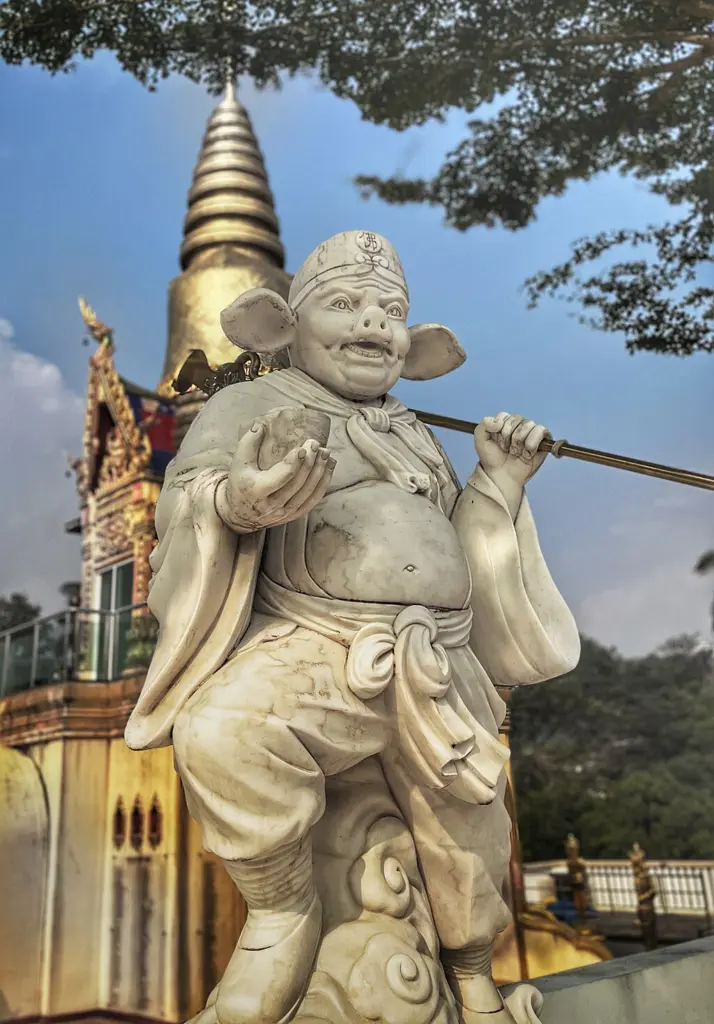
Zhu Bajie, often referred to as Pigsy , is known for his complex and somewhat contradictory character traits. Originally a marshal in the celestial army, Zhu Bajie was banished to the mortal realm as a punishment for his indiscretions in heaven, particularly with the Moon Goddess, Chang’e .
Transformed into a pig-human hybrid, his appearance reflects his base nature and penchant for indulgence, especially in food and women. Despite these flaws, Zhu Bajie becomes one of Tang Sanzang’s disciples, joining the quest to retrieve the Buddhist scriptures from India.
Zhu Bajie’s personality is marked by a mix of bravery and cowardice, loyalty and self-interest, wisdom and folly. He often provides comic relief in the story through his antics and bumbling mistakes, yet his character also displays moments of insight and bravery.
His earthly desires and tendencies towards laziness often put him at odds with his more disciplined and spiritually focused companions, particularly Sun Wukong, with whom he shares a rivalry.
While he deeply respects Tang Sanzang and is committed to the pilgrimage, his weaknesses often lead to complications and challenges for the group. However, these shortcomings make his moments of courage and sacrifice all the more significant, highlighting the theme of redemption and the possibility of moral and spiritual growth regardless of one’s past actions or nature.
Zhu Bajie’s character serves as a reflection on human nature, embodying the struggles between base desires and higher aspirations, between selfishness and altruism. His journey alongside Tang Sanzang is as much about his own redemption and transformation as it is about the physical pilgrimage to India.
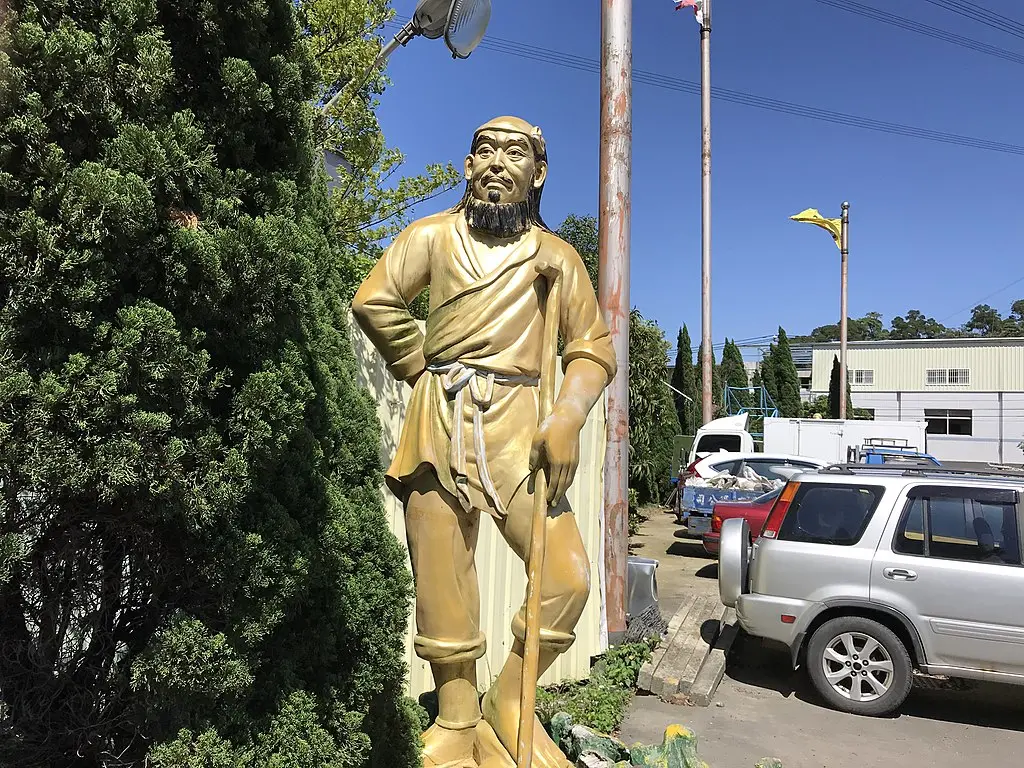
Sha Wujing, or Sandy , is the third disciple who joins Tang Sanzang. Once a celestial general, Sha Wujing was banished to the mortal world as punishment for a transgression in heaven, where he was transformed into a river ogre.
His frightening appearance belies a kind heart and a steadfast, loyal nature. Recognizing his past mistakes, Sha Wujing seeks redemption through service to Tang Sanzang on the perilous journey to the West.
Characteristically, Sha Wujing is the embodiment of stoicism and reliability. Compared to the more flamboyant Sun Wukong and the often comically flawed Zhu Bajie, Sha Wujing’s demeanor is subdued and earnest.
He is less prone to the antics and disputes that sometimes ensnare his fellow disciples, showcasing a level of maturity and wisdom that stabilizes the group. His role is often that of the peacemaker, bridging gaps between his more temperamental companions and ensuring the pilgrimage remains focused on its spiritual goals.
Armed with a magic staff that he uses to combat demons and other threats, he is a formidable fighter in his own right. His knowledge of aquatic environments also proves invaluable, as many of the journey’s challenges take place near or in water.
The Journey to the West
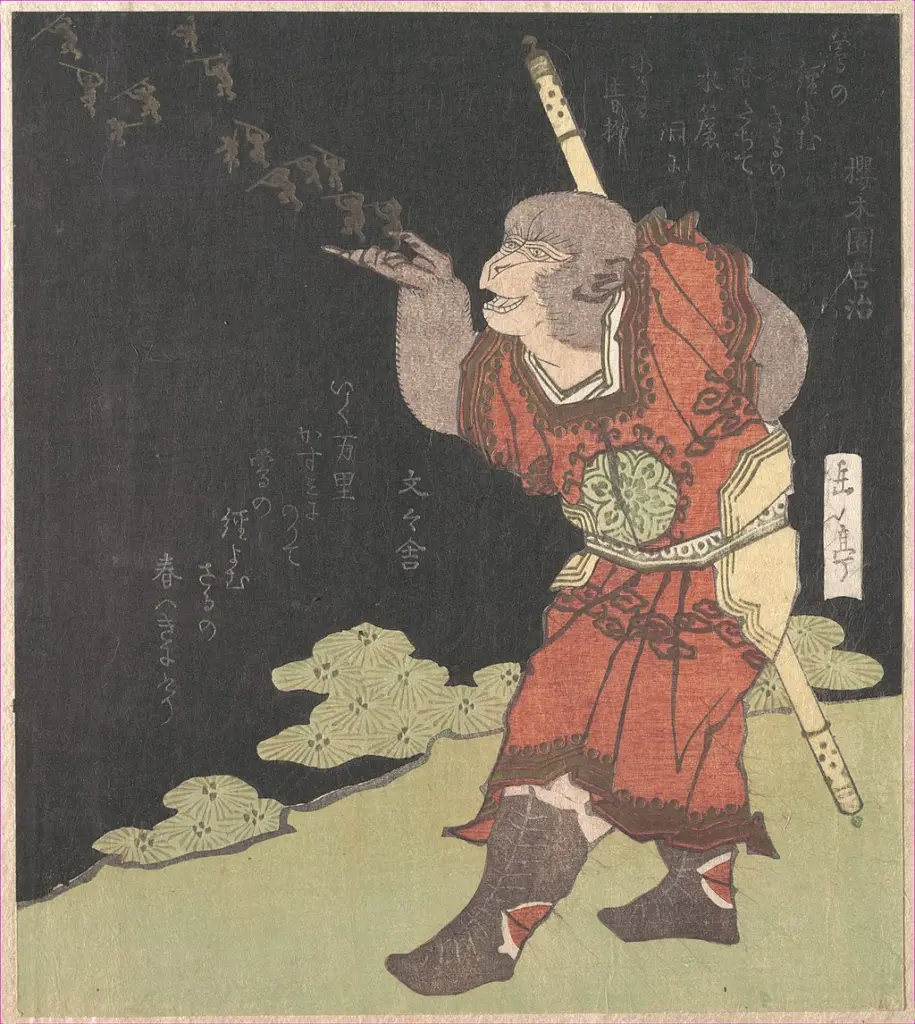
The Origins
In the lush, mystical expanse of the Mountain of Flowers and Fruit, a stone egg, nurtured by the elements and the heavens, gave birth to Sun Wukong, the Monkey King. This miraculous birth marked the beginning of an extraordinary being destined to leave an indelible mark on the realms of gods and mortals alike. Possessing incredible strength, agility, and a keen intellect from birth, Sun Wukong quickly established himself as the king of the monkeys, securing their loyalty through his bravery and wisdom.
Driven by an insatiable curiosity and the fear of death, Sun Wukong embarked on a quest for immortality. His journey led him to the tutelage of a Taoist sage, from whom he learned the secrets of magical arts, shape-shifting, and the way of immortality. These newfound powers, coupled with his natural cunning and prowess, made Sun Wukong a being of unmatched ability.
However, with great power came a great desire for recognition and respect. Sun Wukong’s ambitions soon turned him against the celestial order. Seeking to claim his place among the gods and immortals, he caused havoc in the heavens, challenging the authority of the Jade Emperor himself. His antics and defiance led to a celestial war between his monkey army and the heavenly forces.
The turmoil caused by Sun Wukong could not go unpunished. Despite his might, he was eventually captured by the combined efforts of the Buddha and the celestial army. To curb his rebellious spirit, Buddha imprisoned Sun Wukong under the Five Elements Mountain, sealing him with a magical spell for five hundred years. This punishment was not just a consequence of his actions but also a pivotal moment of transformation. Under the mountain, Sun Wukong was forced to reflect on his deeds and the consequences of his unchecked ambition.
This period of imprisonment was a crucible, tempering Sun Wukong’s fiery spirit with a newfound understanding of responsibility and the importance of humility. It was here, in the shadow of his actions and under the weight of the mountain, that the foundation was laid for his redemption and eventual role as a protector on the journey to the West.
The Calling of Tang Sanzang
In the empire of the Tang Dynasty, under the watchful eyes of celestial beings, the birth of Tang Sanzang was foretold with a prophecy. He was destined to be no ordinary monk, but one whose journey would mark a pivotal moment in the spiritual fabric of the world. From an early age, Tang Sanzang displayed an uncommon devotion to his Buddhist faith, his heart set on understanding the deepest truths of existence and alleviating the suffering of all beings. His life was filled with piety, scholarship, and an unwavering commitment to the path of enlightenment, setting him apart as a vessel for divine purpose.
The turning point in Tang Sanzang’s life came through a divine revelation, where the Bodhisattva Guanyin presented him with a mission of paramount importance. He was to travel to the Western regions of India to retrieve sacred Buddhist scriptures not yet available in China . These texts held the key to deepening the spiritual understanding and salvation for countless souls in his homeland. This was not just a journey across lands; it was a pilgrimage that would test the limits of his faith, endurance, and spirit.
The gravity of this mission was clear; the scriptures were vital for the propagation of Buddhism in China, promising a new era of spiritual insight and enlightenment. However, the path to the West was fraught with perils beyond imagination—demons, treacherous landscapes, and trials that would challenge the very essence of his being. It was a journey that no one could undertake alone and survive, let alone succeed.
Recognizing the monumental challenges that lay ahead, the Bodhisattva Guanyin promised Tang Sanzang divine assistance in the form of disciples who would protect and guide him through the dangers. These disciples, each with their own paths to redemption and enlightenment, were destined to be united with Tang Sanzang, forming an unlikely fellowship bound by a shared mission.
Thus began Tang Sanzang’s journey, a quest that was not only his own but one that carried the hopes and spiritual aspirations of the entire Buddhist community. With the divine mandate bestowed upon him, Tang Sanzang set forth, stepping into the annals of legend.
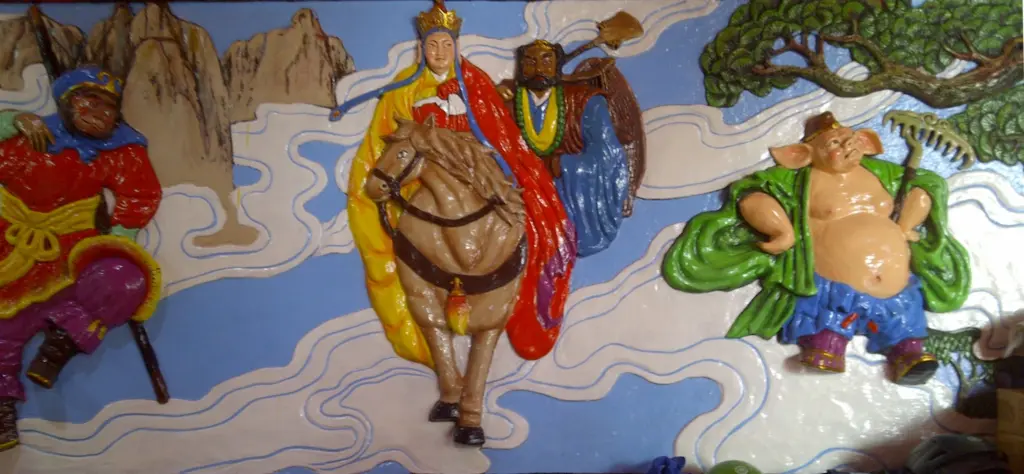
Assembling the Disciples
As Tang Sanzang began his perilous journey to the West, the first to join him was none other than Sun Wukong, the Monkey King. Freed from his five-century imprisonment under the Five Elements Mountain by Tang Sanzang himself, Sun Wukong was bound to him by a vow. This vow, forged in the fires of redemption (and the head-tightening band), was Sun Wukong’s promise to protect Tang Sanzang throughout the journey. The release symbolized not only Sun Wukong’s second chance but also the formation of an unbreakable bond between the disciple and his master. With his unparalleled martial prowess and magical abilities, Sun Wukong was a formidable protector, one whose loyalty and dedication to Tang Sanzang’s mission were beyond question.
The next to join this celestial mission was Zhu Bajie, once a marshal in the heavens, now living as a half-human, half-pig being as punishment for his lascivious behavior in the celestial realm. Encountered by Tang Sanzang and Sun Wukong, Zhu Bajie was persuaded to join the pilgrimage, seeking redemption for his past misdeeds.
Sha Wujing, the third disciple, was once a celestial general who, due to a grave mistake, was banished to a river, taking the form of a fearsome water ogre. His encounter with Tang Sanzang and the promise of redemption through service transformed Sha Wujing from a feared monster into a loyal disciple.
Together, these three disciples, each with their unique strengths, weaknesses, and backgrounds, formed the core of Tang Sanzang’s entourage. Their assembly was no mere coincidence but a divinely orchestrated gathering of souls seeking redemption, enlightenment, and the fulfillment of a sacred mission.
Trials and Tribulations
As Tang Sanzang and his newly assembled disciples embarked on their journey to the West, they were soon met with a series of trials that tested their resolve, unity, and individual capabilities. These challenges served not only as obstacles to be overcome but also as crucibles for character development and bonding among the pilgrims.
One of the first major trials they faced was the Black Wind Mountain, where a fierce demon known for capturing and eating travelers threatened their mission. It was here that Sun Wukong’s prowess and quick thinking were first put to the test, showcasing his ability to protect Tang Sanzang against seemingly insurmountable odds.
Another significant challenge came in the form of the White Bone Demon, a creature capable of changing its form to deceive and capture Tang Sanzang. This trial tested not only the physical strength of the disciples but also their wisdom and ability to see through deception.
These early trials also brought to the forefront the dynamics and interactions among the disciples. Sun Wukong’s impulsive nature and readiness to use force were often at odds with Tang Sanzang’s more compassionate and pacifistic approach, leading to tensions within the group. Zhu Bajie and Sha Wujing, each with their distinct personalities and strengths, found themselves navigating the complex dynamics between their desire for redemption and the often chaotic leadership of Sun Wukong.
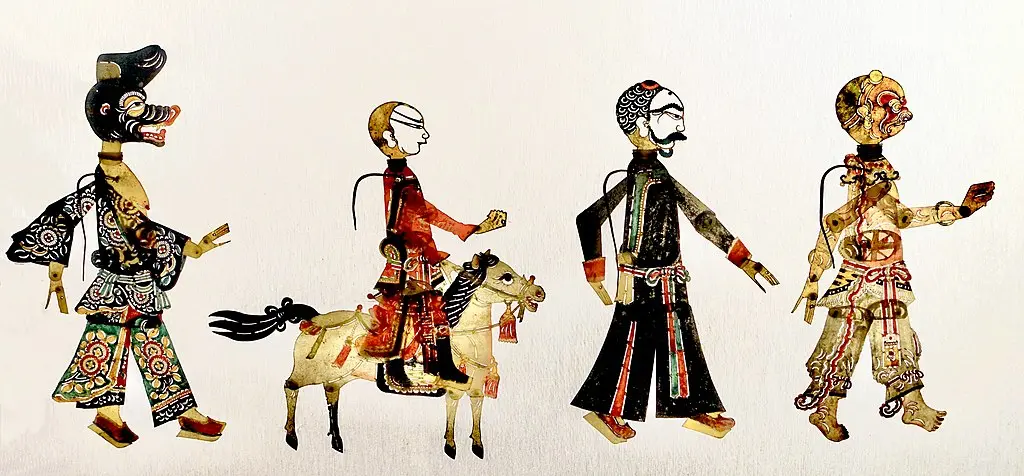
The Final Challenges
As Tang Sanzang and his disciples neared the end of their epic quest to retrieve the sacred scriptures from the West, they encountered the Fiery Mountain, a vast barrier of flames that seemed insurmountable. This natural obstacle was a metaphor for the burning trials of the spirit, a test of their resolve and unity. To pass, they needed the fan of the Princess Iron Fan, a task that proved to be as much about diplomacy and wisdom as it was about strength and courage. The quest for the fan was marked by deception and challenges that tested their patience and ingenuity, especially for Sun Wukong, whose confrontations with the Princess pushed him to find non-violent solutions.
Following this, the pilgrims faced the ordeal of the Tenfold Maze, a bewildering labyrinth that tested their mental endurance and faith. The Maze, crafted by powerful magic, represented the inner confusions and doubts that can lead one astray from the path of enlightenment. Each turn and dead end forced the disciples to rely not just on Sun Wukong’s strength or Zhu Bajie’s might, but on Tang Sanzang’s unwavering faith and Sha Wujing’s quiet determination. It was their unity and collective wisdom that eventually led them through the maze, symbolizing the triumph of shared purpose over individual despair.
Perhaps the most significant trial came in the form of a spiritual challenge directly from the Buddha. Before granting them the scriptures, Buddha tasked Tang Sanzang and his disciples with a final test of their virtues and understanding of the Buddhist teachings. This trial was not about battling demons or overcoming physical barriers but confronting their inner selves and the essence of their journey. Each disciple, including Tang Sanzang, faced manifestations of their past errors, fears, and desires, challenging them to apply the lessons of compassion, humility, and perseverance they had learned on their journey.
The confrontation with their inner demons was a profound moment for the pilgrims, especially for Sun Wukong, whose journey from rebel to protector had been fraught with pride and anger. For Zhu Bajie, it was a moment to transcend his baser instincts and desires, while Sha Wujing confronted the solitude and obscurity of his existence with newfound peace. For Tang Sanzang, it was the ultimate test of his faith and his commitment to his mission, proving his worthiness to receive the sacred texts.
Arrival in the West
After overcoming the final, daunting challenges set before them, Tang Sanzang and his disciples reached their sacred destination in the West. It was here, in the presence of the Buddha, that they were finally granted the sacred scriptures.
The attainment of the sacred scriptures was an achievement of monumental significance. For Tang Sanzang, it represented the fulfillment of a divine mission entrusted to him, affirming his unwavering faith and dedication. The scriptures themselves were not just texts but beacons of wisdom, destined to enlighten countless generations to come. Their acquisition symbolized the bridging of divine knowledge from the West to the East, promising an era of spiritual awakening and understanding for Tang Sanzang’s homeland.
For the disciples, the journey to the West and the acquisition of the scriptures were transformative. Sun Wukong, once a rebellious figure driven by pride and the desire for immortality, emerged as a being of enlightenment, his actions tempered by wisdom and compassion. The journey refined his character, turning his immense power and cunning into instruments of protection and service to a cause greater than himself.
Upon their return to the Tang Empire, the pilgrims were received with reverence. The sacred scriptures were translated and spread, seeding the growth of Buddhism and its teachings throughout the land. The disciples, each awarded divine recognition for their service, achieved a form of enlightenment that transcended their former selves ( Both Sun Wukong and Tang Sanzang were turned into Buddhas .)
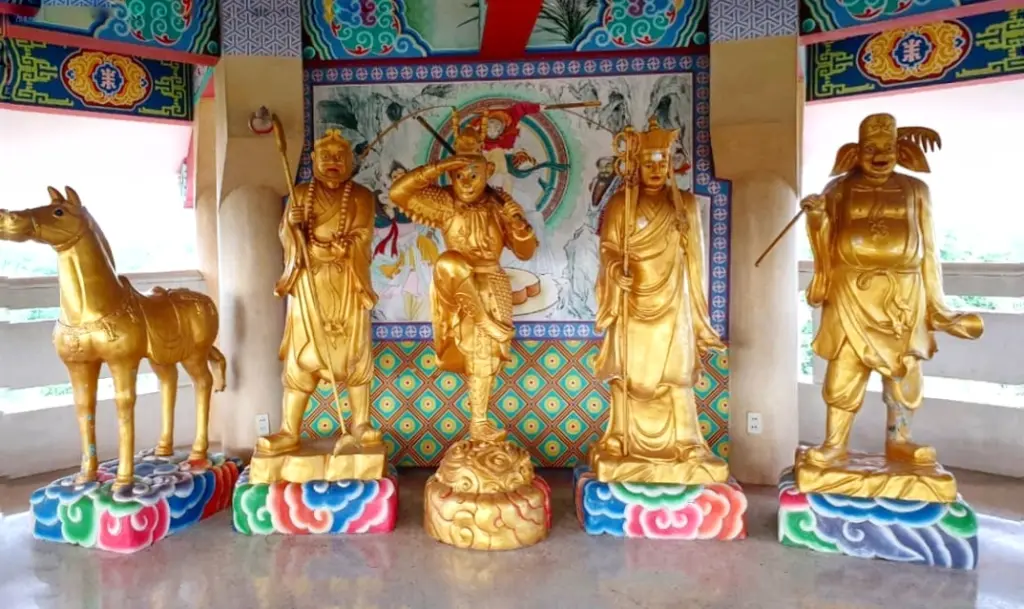
Summary of the Journey to the West
“Journey to the West” is a chronicling of the pilgrimage of the Buddhist monk Tang Sanzang and his quest to retrieve sacred scriptures from India. Alongside him are his three disciples: Sun Wukong, the Monkey King, with his unparalleled martial prowess and magical abilities; Zhu Bajie, the gluttonous and lecherous pig demon with a heart of gold; and Sha Wujing, the steadfast and reliable river demon. Each disciple, once celestial beings now seeking redemption for past transgressions, brings unique strengths and weaknesses to the journey, creating a dynamic and sometimes volatile mix of personalities.
The narrative begins with the birth and rise of Sun Wukong, who, after acquiring magical powers and challenging the heavens, is imprisoned under a mountain by the Buddha for his arrogance. Meanwhile, Tang Sanzang, chosen by the Bodhisattva Guanyin , embarks on a mission to the West to obtain Buddhist sutras that will enlighten the East. Along the way, he liberates and recruits Sun Wukong, Zhu Bajie, and Sha Wujing, who vow to protect him in exchange for their spiritual redemption.
Their journey is fraught with peril, encountering a series of demons and monsters intent on capturing Tang Sanzang for their own gain. Each challenge tests the group’s resolve, faith, and unity, with Sun Wukong’s quick wit and might often saving the day. Despite their differences and the difficulties they face, the pilgrims learn valuable lessons in compassion, patience, humility, and perseverance. These trials serve not only as physical obstacles but as spiritual tests, refining each disciple’s character and strengthening their bonds.
The pilgrimage is marked by significant trials, from battling the fiery Red Boy and outsmarting the cunning Spider Demons to navigating the treacherous Flaming Mountain and the illusion-filled Tenfold Maze. Each ordeal brings them closer together, teaching them the importance of teamwork, sacrifice, and the pursuit of enlightenment.
Upon reaching the West and passing the final tests set by the Buddha, Tang Sanzang and his disciples are granted the scriptures. Their return to the Tang Empire is triumphant, with each disciple achieving enlightenment and recognition for their service. The sacred texts they bring back promise a new era of spiritual awakening for their homeland.
- Loyalty and Devotion: The loyalty of Sun Wukong, Zhu Bajie, and Sha Wujing to Tang Sanzang is a central theme that underscores the importance of fidelity in the face of adversity. Their unwavering commitment to protect their master and ensure the successful retrieval of the sacred scriptures speaks to the value of loyalty in achieving a higher spiritual purpose.
- Perseverance through Trials: The pilgrims’ journey is fraught with challenges that test their resolve, faith, and endurance. Each trial, whether it be a confrontation with demons or overcoming natural obstacles, symbolizes the inner struggles individuals face on their path to enlightenment.
- The Quest for Enlightenment: At its heart, “Journey to the West” is a spiritual odyssey that mirrors the Buddhist path to enlightenment. The journey to retrieve the scriptures symbolizes the pursuit of wisdom and understanding, essential for liberation from suffering and the cycle of rebirth. The transformations of the characters, especially the disciples, reflect the individual’s journey toward enlightenment, marked by self-discovery, repentance, and spiritual growth.
- The Battle between Good and Evil: The frequent encounters with demons and the celestial trials faced by Tang Sanzang and his disciples embody the eternal struggle between good and evil. This theme is not only external, in the battles with literal demons, but also internal, representing the moral and spiritual conflicts within each character.
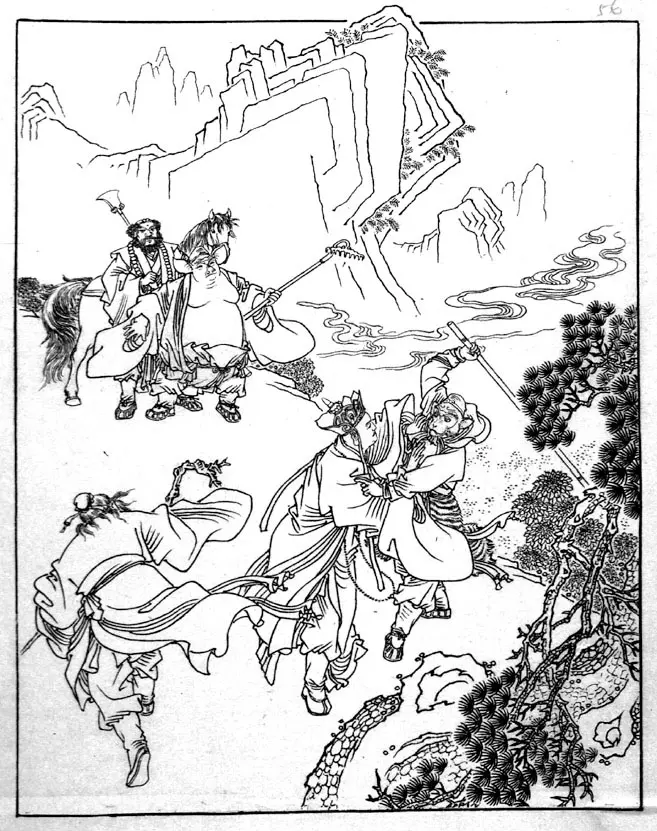
- Characters as Symbolic Archetypes: The main characters of “Journey to the West” are rich in symbolic significance. Sun Wukong, with his rebellious nature and transformative journey, symbolizes the untamed mind and the potential for enlightenment through discipline and self-cultivation. Zhu Bajie represents human desires and flaws, highlighting the struggles and potential for redemption despite one’s imperfections. Sha Wujing embodies steadfastness and humility, qualities essential for spiritual progress.
- Events as Metaphors for Spiritual Lessons: Many of the events and trials encountered by the pilgrims are metaphors for spiritual lessons. For example, the crossing of the Flaming Mountain can be seen as a metaphor for overcoming the burning passions and attachments that hinder spiritual growth. The encounters with various demons can represent the overcoming of personal obstacles on the path to enlightenment.
- The Journey Itself: The journey to the West is symbolic of the Buddhist path towards enlightenment. It is fraught with difficulties and distractions, much like the spiritual journey of an individual.
Moral Lessons
- Redemption and the Potential for Change : The characters of “Journey to the West,” especially the disciples of Tang Sanzang, embody the theme of redemption and the belief in the potential for change. Sun Wukong, Zhu Bajie, and Sha Wujing, each banished for their transgressions, find in their journey an opportunity for transformation. Their willingness to protect Tang Sanzang and endure hardships for the sake of obtaining the sacred scriptures illustrates the possibility of redemption, regardless of past misdeeds. This reflects the Buddhist concept of karma and the idea that positive actions can counteract negative past actions, leading to spiritual growth and liberation.
- Virtue and Moral Integrity : Throughout the novel, Tang Sanzang serves as a moral compass, embodying virtue and moral integrity. His compassion, patience, and unwavering commitment to non-violence, even in the face of danger, highlight the importance of upholding one’s principles. Tang Sanzang’s interactions with demons, often opting for understanding and conversion rather than conflict, reinforce the novel’s message that compassion and wisdom are more powerful than force.
- The Pursuit of Knowledge and Enlightenment : “Journey to the West” places great emphasis on the pursuit of knowledge and enlightenment, both as a personal quest and for the benefit of others. The journey to obtain the Buddhist scriptures symbolizes the quest for spiritual knowledge and truth. This quest is not portrayed as easy or straightforward but rather as a path filled with obstacles that require perseverance, sacrifice, and moral fortitude to overcome.
- Humility and Self-Cultivation : Finally, “Journey to the West” teaches the importance of humility and self-cultivation. The characters, particularly Sun Wukong, learn to temper their pride and recognize their limitations. This humility, coupled with a commitment to self-improvement and spiritual cultivation, is portrayed as essential for growth and enlightenment. The novel thus conveys the moral lesson that true strength and wisdom come from understanding oneself, acknowledging one’s flaws, and striving for self-betterment.
SHARE THIS POST
Read this next.
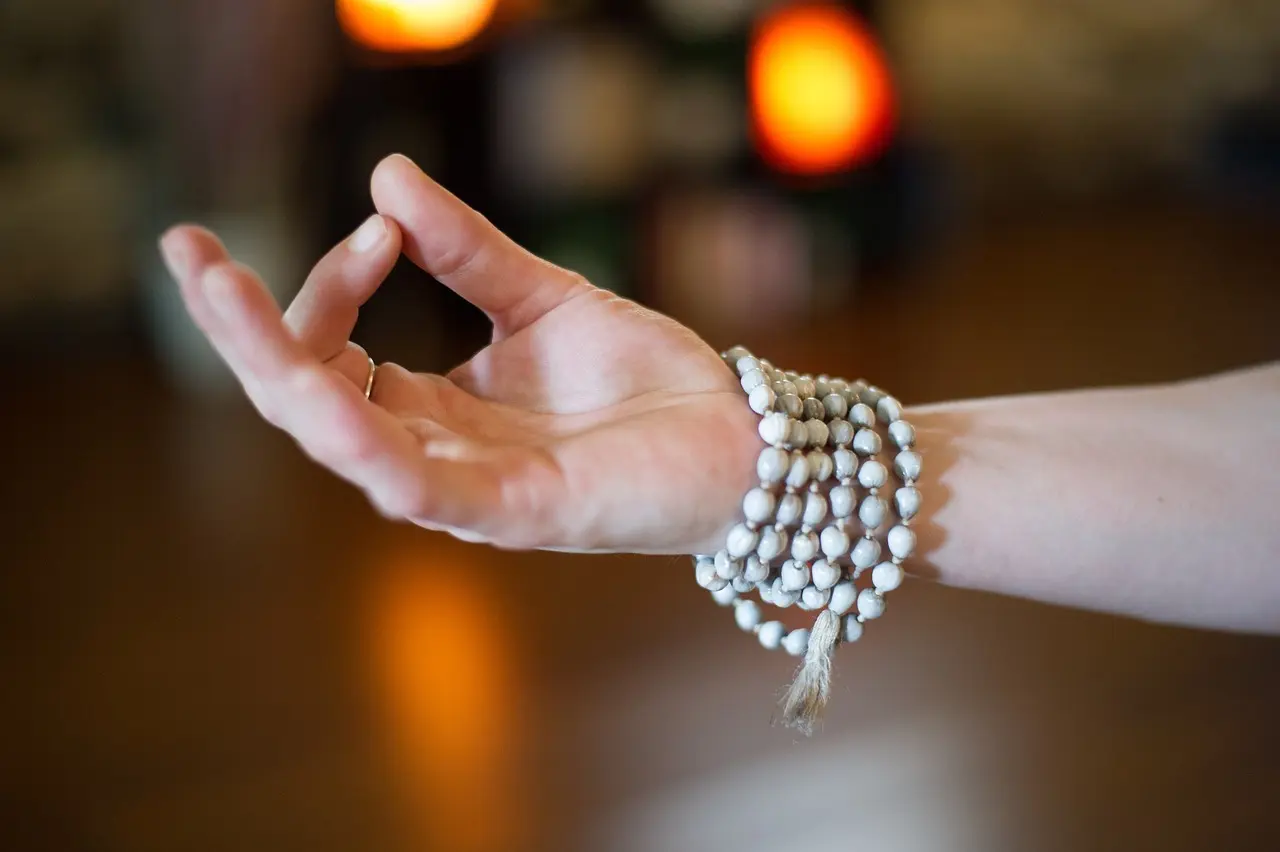
The Science Behind Mudras: Explore 5 Powerful Hand Gestures
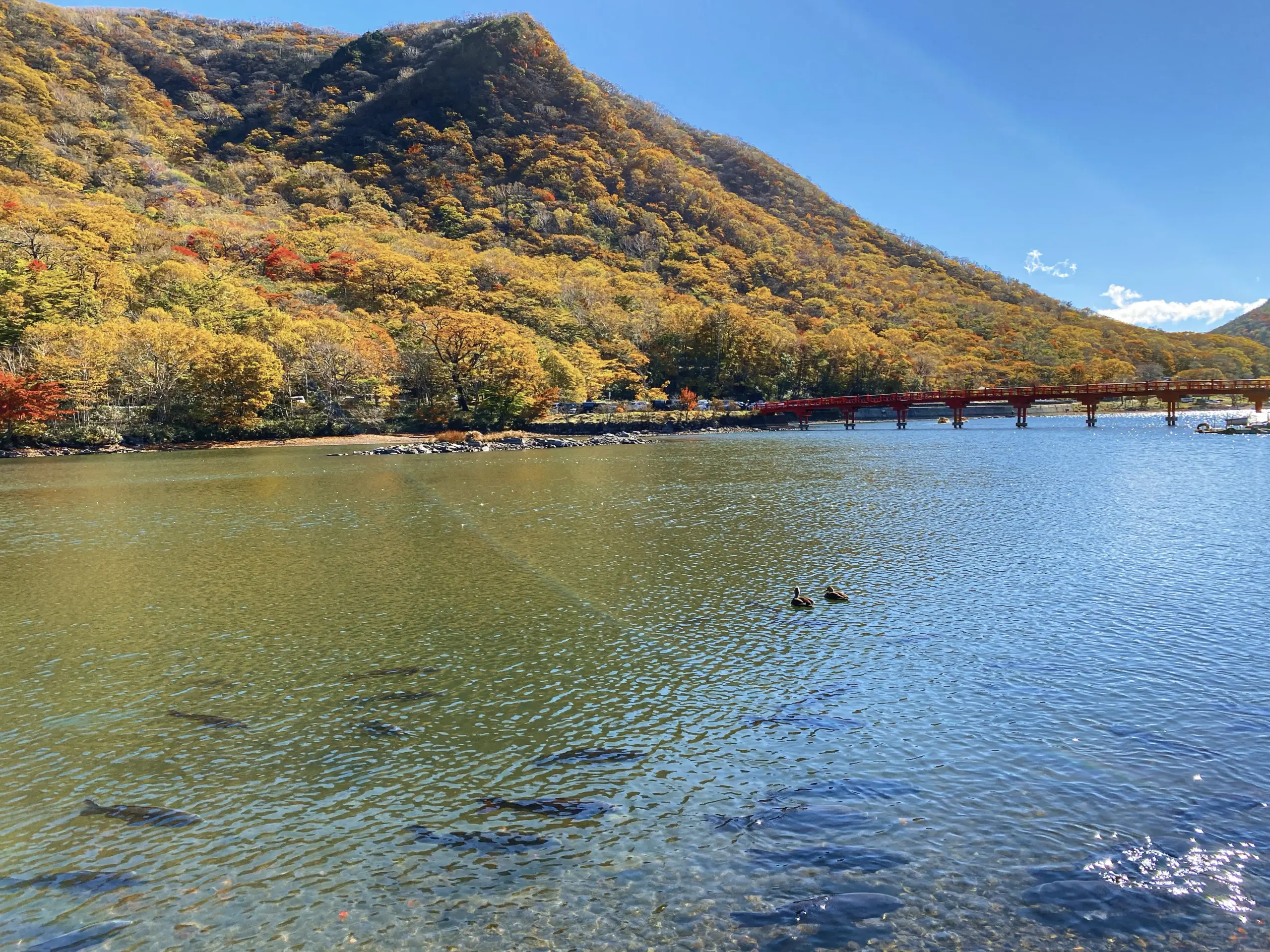
Mt. Akagi Hike | Complete Hiking Guide (2024)

What is the Difference Between the Ramayana and Ramakien?

Leave a Reply Cancel reply
Your email address will not be published. Required fields are marked *

Hi, I’m Brandon
A conscious globe-trotter and an avid dreamer, I created this blog to inspire you to walk the Earth.
Through tales of travel, cultural appreciation, and spiritual insights, let’s dive into the Human Experience.

RECENT ARTICLES

The Spiritual Meaning of Stacking Stones & Why People Do It

12 Awesome Things to Do in Casco Viejo, Panama

5 Easy Steps to Create a Meaningful Sankalpa
Popular articles.
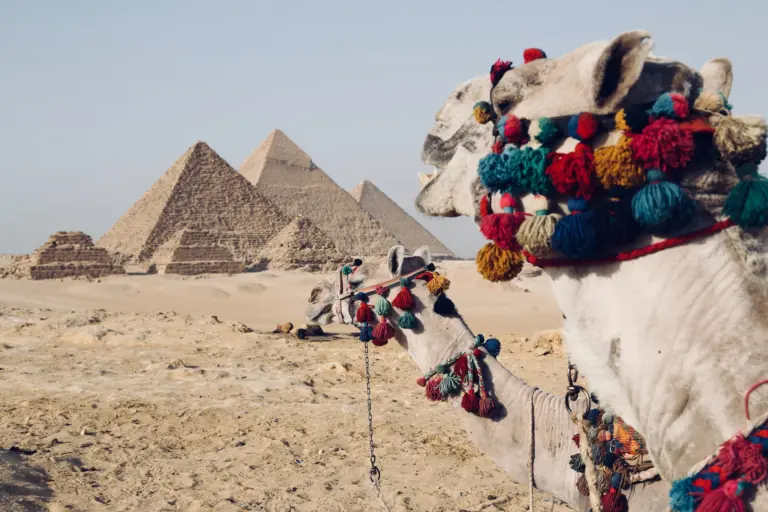
Secrets of Giza | The Pyramids, Astronomy & Other Fun Facts

How I Got My Shoes Stolen on Jeju Island | Travel Stories
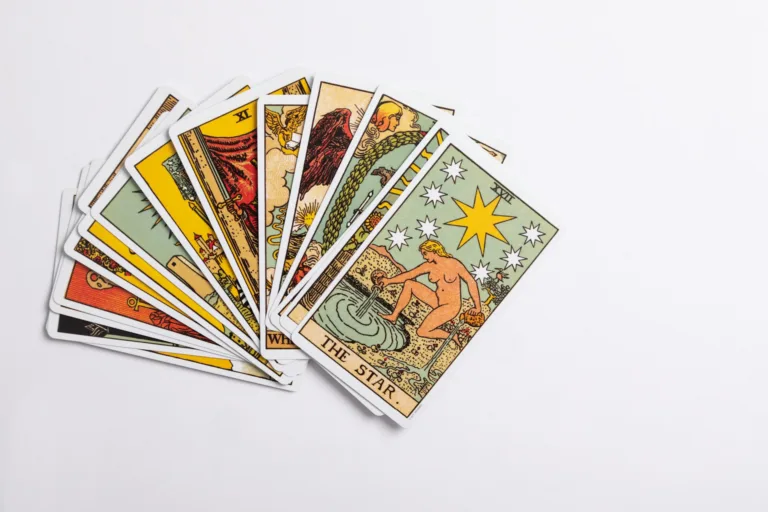
The Fool’s Journey | Life Lessons from the Tarot
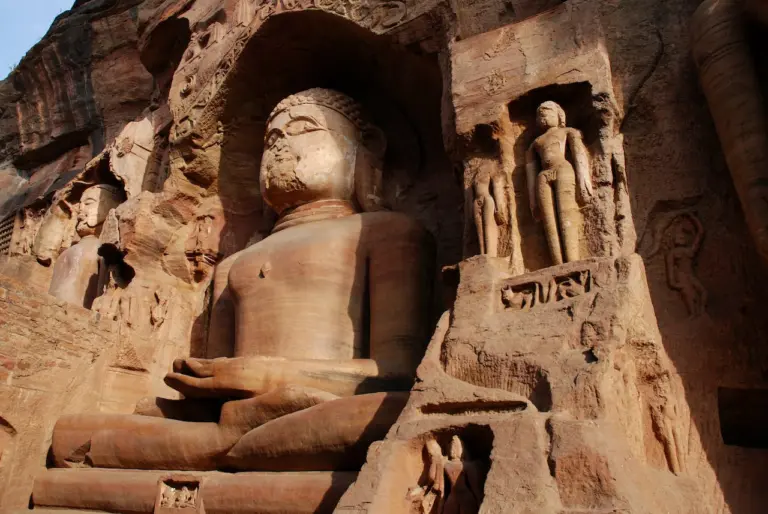
Jainism Simplified | Core Beliefs, Practices & Principles
Subscribe for the latest blog drops, photography tips, and curious insights about the world.

© 2023 ALL RIGHTS RESERVED.
- Destinations
- Privacy Policy
Want to get in touch? Feel free to fill in the form below or drop me an e-mail at [email protected]
A Chinese Classic Journeys to the West: Julia Lovell’s Translation of “Monkey King”
By minjie chen october 5, 2021.
:quality(75)/https%3A%2F%2Fdev.lareviewofbooks.org%2Fwp-content%2Fuploads%2F2021%2F10%2Fmonkeyking.jpeg)
Monkey King: Journey to the West by Wu Cheng’en
LARB Contributor
LARB Staff Recommendations
Idiom as instrument: on yan lianke’s “hard like water”.
Thomas Chen reviews Yan Lianke’s “Hard Like Water,” translated by Carlos Rojas.
Thomas Chen Aug 31, 2021
A Search for the Soul of the Mainland
Yunte Huang has compiled a 624-doorstop of an anthology.
Liz Carter May 1, 2016
Did you know LARB is a reader-supported nonprofit?
LARB publishes daily without a paywall as part of our mission to make rigorous, incisive, and engaging writing on every aspect of literature, culture, and the arts freely accessible to the public. Help us continue this work with your tax-deductible donation today!
Monkey: A Folk Novel of China
By wu ch'eng-en, monkey: a folk novel of china summary and analysis of chapters 20-25.
Summary and Analysis
Tripitaka makes Monkey suffer from the spell while Pigsy eggs him on in Chapter 21, until Monkey goes on his cloud-trapeze spell to Lao Tzu for a grain of his Nine times Sublimated Life Restoring Elixir. Pigsy and Tripitaka mourn the king, while Monkey convinces Lao Tzu that he is not the same troublesome creature he was 500 years ago. After hearing the king's story, Lao Tzu laughs at Monkey's request for a thousand grains of the elixir, and grants him just one pill, as Monkey hoped. He successfully revives the king after giving him the elixir and breathing in his mouth. They all travel back to the city of Crow-cock, and the travelers go to the imposter to get their papers in order. Just as Monkey angers the false king, the prince arrives and lies, saying that the travelers were expected and foretold three years ago. Monkey reveals that their fourth companion is the true king and the imposter runs away on a cloud. Monkey follows and fights him, until the imposter turns himself into Tripitaka causing Monkey to pause until the real one begins to recite the headache spell, while the imposter simply mumbles. Pigsy and Sandy attack the imposter, with Monkey about to deliver the final blow when the Bodhisattva Manjusri arrives and takes the imposter back. It is revealed that the imposter was sent explicitly by Buddha and is actually Manjusri's lion. Buddha did this after the true king left Manjusri in a well for three days.
In Chapter 22 the true king has doubts about his right to return to his position after three years, and offers his throne to the travelers, all of who refuse. The four pilgrims continue their journey and hear a loud noise, which Monkey discovers is the sound of enslaved Buddhist priests building a temple on a cliff-side for the Taoists. Monkey disguises himself as a Taoist and learns that the city is run by three Immortals: Tiger Strength Immortal, Deer Strength immortal, and Ram Strength Immortal. The Taoist officials allow him to meet the Buddhist priests, as Monkey claims he is looking for a lost relation. He then derides the Buddhists for being so submissive and not running away, while they bewail their suffering. Monkey goes back to the officials and claims that all are his relations and demands that they all be released. When they refuse, Monkey kills them and reveals himself to the Buddhists, giving them his hair so that they may call upon him at any time if they are in danger. He brings them to Tripitaka, and in order to feed them, Monkey stirs up a great wind to disperse the Taoist worshippers, causing them to leave their offerings. However, a little Taoist forgot his hand bell in his fright, and upon returning for it, hears Pigsy laughing and is scared again. He runs and tells the Immortals and other Taoists, who go to the temple to investigate.
At the beginning of Chapter 23, Monkey, Pigsy, and Sandy pose as the three Taoist deities, offering holy water to the priests before revealing it to be just their urine. The Taoist priests fly into a rage and tell the king of the pilgrims’ misdeeds, and the king decides to settle the matter by having a rainmaking contest between the Buddhists and Taoists. The Taoists go first and begin to have success, which Monkey interferes with by scaring those in charge of the wind, clouds, and thunder. When it is his turn, he is successful at producing rain, which the Taoists try to take credit for in front of the king. Monkey challenges them to produce the dragons, which they fail to do, while Monkey makes them materialize easily. The king gives reverence to these spirits.
In Chapter 24, the Taoists again challenge the Buddhists to a competition of meditation, eager to keep their power. Tripitaka takes on the challenge against the Tiger Strength Immortal. The Immortals throw a louse on Tripitaka's head, which Monkey removes and retaliates by turning himself into a centipede and crawling up the Taoist's nose, causing him to fall and lose. Deer Strength Immortal then challenges Tripitaka to guessing what is "behind the boards." With Monkey's aid in the form of a gnat, Tripitaka guesses correctly that there is an old cracked dish, a peach-stone, and a little Buddhist. The Taoists then challenge them to a competition of head-cutting, belly-ripping, and bathing in boiling oil. Monkey submits to the head-cutting and grows a new head when Deer Strength Immortal interferes with his old one. However, Deer Strength dies when he attempts this trick, as Monkey turns into a dog and places his head in the royal moat so that it does not come when called. After Monkey's success in the belly-ripping trial, the king again tries to hand the travelers their passports so that they leave, but the competition must continue. Deer Strength is unsuccessful in the belly-ripping as Monkey turns into a hawk and steals his guts as he is cleaning them. Monkey then faces the Ram Strength Immortal in oil bathing and performs the task without a hitch, purposely scaring his companions momentarily. The Ram Strength Immortal has a chilly dragon who cools the oil, but Monkey calls upon his friend the Dragon King of the Northern Ocean to take away this chilly dragon, revealing that the powers of the Immortal are the Five Thunder Methods and a few tricks, and so the Immortal dies without the chilly dragon's help.
Monkey snaps the king out of his mourning for the Immortals and a feast is subsequently held for all Buddhists in Chapter 25. Monkey asks the king to remember that "the Three Religions are one" as the travelers embark again on their journey. They reach the River that leads to Heaven, and go look for help in crossing it. The travelers hear the sound of Buddhist music and are treated to a feast as their benefactor tells the sad story of his daughter Load of Gold and his nephew War Boy, who are set to be sacrificed to the gods soon. Monkey changes himself and Pigsy into their exact replicas to trick the god and repay the old man for his kindness. Monkey and Pigsy finish a trial run just as the time of sacrifice approaches.

Monkey: A Folk Novel of China Questions and Answers
The Question and Answer section for Monkey: A Folk Novel of China is a great resource to ask questions, find answers, and discuss the novel.
Through their long journey to India to retrieve the scriptures, what do the main characters (Tripitaka, Monkey, Pigsy, Sandy) learn about themselves, each other, and their own beliefs? How do they react to various circumstances?
These are thematic ideas. You can find out about what they learned and how they grew at the themes link below:
https://www.gradesaver.com/monkey-a-folk-novel-of-china/study-guide/themes
Compare and contrast the role of two religions in Monkey. Do they always work in harmony? Do they have separate hierarchies? Conflicting ideologies? Do they provide sources of conflict? If so, how and why?
Thanks for your questions. This is only a short answer space but I can make a general comment.
Tripitaka is taking the journey from China in the east to India where Buddha has his holy scriptures so the religion of Buddha can spread and people can...
Analyzing how the writer used description/
Okay, so what writer/text is it? If you have an extract could you send it? You're only focusing on 'description', so stuff like language devices really: metaphors, similes, personification, [in poems especially, anaphora, enjambment, caesura,...
Study Guide for Monkey: A Folk Novel of China
Monkey: A Folk Novel of China study guide contains a biography of Wu Ch'eng-en, literature essays, quiz questions, major themes, characters, and a full summary and analysis.
- About Monkey: A Folk Novel of China
- Monkey: A Folk Novel of China Summary
- Character List
Essays for Monkey: A Folk Novel of China
Monkey: A Folk Novel of China essays are academic essays for citation. These papers were written primarily by students and provide critical analysis of Monkey by Wu Ch'eng-en.
- Monkey and The Ramayana
- “The Monkey and the Monk”: An Allegory of Buddhist Teachings
Wikipedia Entries for Monkey: A Folk Novel of China
- Introduction
- Historical context
- Main characters
Journey to the West: Volume I
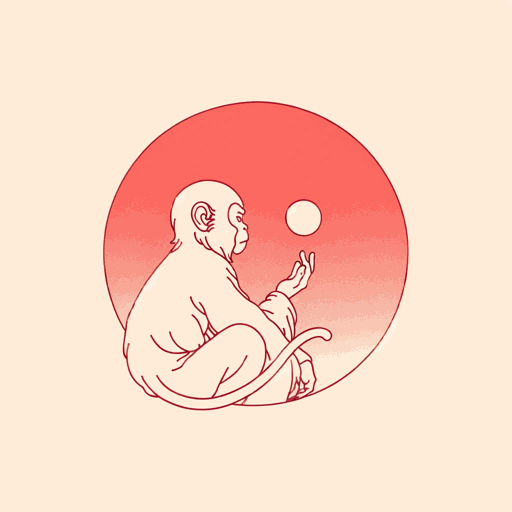
85 pages • 2 hours read
The Journey to the West: Volume I
A modern alternative to SparkNotes and CliffsNotes, SuperSummary offers high-quality Study Guides with detailed chapter summaries and analysis of major themes, characters, and more. For select classroom titles, we also provide Teaching Guides with discussion and quiz questions to prompt student engagement.
Chapter Summaries & Analyses
Chapters 1-5
Chapters 6-10
Chapters 11-15
Chapters 16-20
Chapters 21-25
Character Analysis
Symbols & Motifs
Important Quotes
Essay Topics
Discussion Questions
“When the monkeys heard this, they all covered their faces and wept mournfully, each one troubled by his own impermanence.”
The monkeys who follow the stone monkey join him in worrying that they will be forgotten when they die. They know they are mortal, so their lives will end. They don’t so much fear the process of death as they do its result: removal from existence. They fear being subjected to the whims of Yama, who is the King of the Underworld.
Get access to this full Study Guide and much more!
- 7,550+ In-Depth Study Guides
- 4,850+ Quick-Read Plot Summaries
- Downloadable PDFs
“Nothing in the world is difficult; only the mind makes it so.”
Patriarch is trying to teach Wukong that mind over matter can allow one to accomplish previously presumed impossible feats, such as cloud-soaring.
“In an orderly fashion, they made the entire Flower-Fruit Mountain as strong as an iron bucket or a city of metal.”
One of the important elements of Daoism is alchemy, so any transformation of one substance to another—such as the transformation of earth (the mountain) into metal (iron)—is a reference to the Daoist arts. Whenever characters fight using the Way, they usually use transformation to gain the competitive edge.

Don't Miss Out!
Access Study Guide Now
Related Titles
By these authors
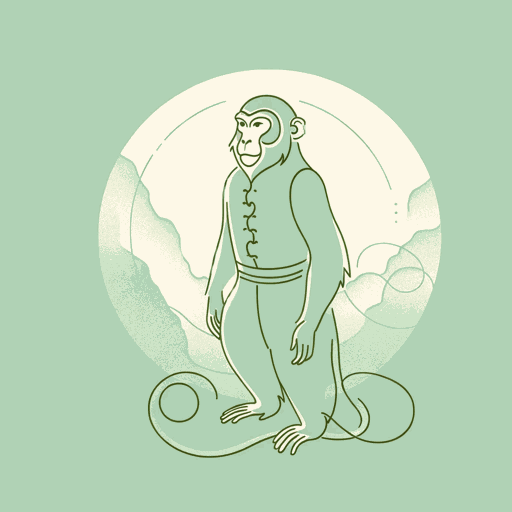
Monkey: A Folk Novel of China
Wu Cheng'en, Transl. Arthur Waley
Featured Collections
Chinese Studies
View Collection
Good & Evil
Order & Chaos
Pride & Shame
The Monkey King: an Anti Hero’s Journey
This essay about the Monkey King, Sun Wukong, from the classic Chinese novel “Journey to the West,” explores the character as an anti-hero rather than a traditional hero. Born from a stone and seeking immortality, Sun Wukong’s tale is marked by mischief, defiance against the heavens, and eventual redemption. The essay highlights his transformation from a rebel to a protector on his quest to retrieve Buddhist sutras, maintaining his mischievous nature and unconventional problem-solving methods. It emphasizes how Sun Wukong challenges our expectations of heroes and villains, embodying the complexity of human nature. The essay concludes by noting Sun Wukong’s lasting appeal across cultures, serving as a symbol of rebellion, resilience, and the nuanced journey towards enlightenment.
How it works
The Monkey King, a figure shrouded in the mists of mythology and folklore, has journeyed far beyond the confines of his origins in the classic Chinese novel “Journey to the West.” Authored by Wu Cheng’en during the 16th century Ming dynasty, this novel has transcended time, cultural boundaries, and language barriers to become a global icon. At the heart of this enduring appeal is the Monkey King himself, known as Sun Wukong, whose story is anything but conventional. Unlike the traditional hero, who is often characterized by virtue and unwavering moral compass, Sun Wukong embodies the essence of an anti-hero, making him a fascinating subject of study.
Sun Wukong’s beginnings are as extraordinary as his adventures. Born from a stone atop the Mountain of Flowers and Fruit, and infused with the energies of the earth and heavens, he was no ordinary monkey. His quest for immortality led him to learn the secrets of magic and martial arts from a Taoist sage. However, it’s not his supernatural abilities that make him an anti-hero; it’s his penchant for mischief, defiance against the heavens, and the tumultuous journey of redemption that follows, which sets him apart.
The tale of Sun Wukong is a rich tapestry of rebellion, punishment, growth, and enlightenment. His initial defiance against heaven, which included raiding the celestial peach garden and claiming the title of “The Great Sage Equal to Heaven,” reflects the anti-hero’s characteristic disregard for authority and norms. Yet, these actions led to his imprisonment under a mountain for five hundred years, a period of introspection and transformation that marked the beginning of his redemption arc.
Sun Wukong’s journey with the monk Xuanzang to retrieve Buddhist sutras from India is where his transition from a rebel to a protector unfolds. The once unruly monkey king becomes the monk’s guardian, facing demons and gods, using his cunning and power not for personal gain but for the greater good. This transformation, however, doesn’t erase his mischievous nature or his tendency to solve problems through unconventional means, which are trademarks of an anti-hero. It’s this complexity of character – the blend of flaws and virtues – that makes Sun Wukong a relatable and enduring figure.
What sets the Monkey King apart from other mythical heroes is not just his incredible power or his journey of redemption, but his ability to challenge and subvert our expectations of what a hero should be. He does not fit neatly into the mold of a traditional hero or villain; his character embodies the gray areas in between, making him a more reflective representation of humanity. Sun Wukong’s story encourages us to question and rethink the dichotomy of good versus evil, hero versus villain.
In contemporary culture, the Monkey King has taken on many forms, from animated characters to protagonists in novels and films, each interpretation offering a new perspective on this complex character. Yet, at his core, Sun Wukong remains the defiant, clever, and irreverent figure who challenges the status quo, making him a timeless symbol of rebellion and resilience.
The story of the Monkey King is a vivid reminder that heroes come in many forms, some of them unconventional. It’s a narrative that celebrates the anti-hero’s journey—one fraught with mistakes, learning, and ultimately, growth. Through the tale of Sun Wukong, we are invited to explore the depth of our own character, to embrace our imperfections, and to recognize the potential for redemption and enlightenment within us all. This, perhaps, is the true legacy of the Monkey King—a legacy that continues to inspire and resonate across generations and cultures.
Cite this page
The Monkey King: An Anti Hero's Journey. (2024, Apr 29). Retrieved from https://papersowl.com/examples/the-monkey-king-an-anti-heros-journey/
"The Monkey King: An Anti Hero's Journey." PapersOwl.com , 29 Apr 2024, https://papersowl.com/examples/the-monkey-king-an-anti-heros-journey/
PapersOwl.com. (2024). The Monkey King: An Anti Hero's Journey . [Online]. Available at: https://papersowl.com/examples/the-monkey-king-an-anti-heros-journey/ [Accessed: 3 May. 2024]
"The Monkey King: An Anti Hero's Journey." PapersOwl.com, Apr 29, 2024. Accessed May 3, 2024. https://papersowl.com/examples/the-monkey-king-an-anti-heros-journey/
"The Monkey King: An Anti Hero's Journey," PapersOwl.com , 29-Apr-2024. [Online]. Available: https://papersowl.com/examples/the-monkey-king-an-anti-heros-journey/. [Accessed: 3-May-2024]
PapersOwl.com. (2024). The Monkey King: An Anti Hero's Journey . [Online]. Available at: https://papersowl.com/examples/the-monkey-king-an-anti-heros-journey/ [Accessed: 3-May-2024]
Don't let plagiarism ruin your grade
Hire a writer to get a unique paper crafted to your needs.

Our writers will help you fix any mistakes and get an A+!
Please check your inbox.
You can order an original essay written according to your instructions.
Trusted by over 1 million students worldwide
1. Tell Us Your Requirements
2. Pick your perfect writer
3. Get Your Paper and Pay
Hi! I'm Amy, your personal assistant!
Don't know where to start? Give me your paper requirements and I connect you to an academic expert.
short deadlines
100% Plagiarism-Free
Certified writers

IMAGES
VIDEO
COMMENTS
Chapter 3: The Monkey's Story. Monkey decides that his clan needs weapons in case they are attacked again. He goes to a city of soldiers and steals their armaments. All 47,000 monkeys in his clan are now armed but, as their king, Monkey deserves something superior to the weapons of his subjects.
The Journey to the West: Volume I (1983), translated and edited by Anthony C. Yu, contains the first 25 chapters of a 100-chapter hero's epic, an allegory designed to impart knowledge on how to behave and what values to extol. Originally published in the late 16th century during the late Ming Dynasty, this epic is "loosely based on the famous pilgrimage of Xuanzang…the monk who went from ...
The Monkey King spends his early days learning Taoist philosophy; this first section of Journey to the West describes his path to Taoist enlightenment, painstaking mastery of combat, and efforts ...
Nov 24, 2023 11:32 AM EST. Journey to the West Analysis. The tale of Monkey and his journey deep into the Buddhist heartland of India is an elaborate tale filled with adventure, allegory, and spiritual insight. Monkey tricks his way in and out of many stressful situations. He is a deviant, mischievous little fellow who can never be trusted.
The Story of Sun Wukong, the Monkey King. One of the most famous primate characters in world literature appears in the great Chinese classic Journey to the West ( Xiyouji, 西遊記, 1592 CE). The story follows the adventures of Sun Wukong (孫悟空, a.k.a. "Monkey") (fig. 1), an immortal rhesus macaque demon, who gains extraordinary power ...
Journey to the West (Chinese: Xiyou ji 西遊記) is a Chinese novel published in the 16th century during the Ming dynasty and attributed to Wu Cheng'en.It is regarded as one of the greatest Classic Chinese Novels, and has been described as arguably the most popular literary work in East Asia. Arthur Waley's 1942 abridged translation, Monkey, is known in English-speaking countries.
Chapter 1 Summary. The first human, Pan Gu, is born of yin (the feminine, dark, negative) and yang (the masculine, light, positive) and makes order by separating good and bad. Yang awakens, and so does Yin. A divinely bred monkey, with yin and yang and magic, along with the essences of the universe, is born from a stone.
Journey to the West, foremost Chinese comic novel, written by Wu Cheng'en, a novelist and poet of the Ming dynasty (1368-1644). The novel is based on the actual 7th-century pilgrimage of the Buddhist monk Xuanzang (602-664) to India in search of sacred texts. The story itself was already a part of Chinese folk and literary tradition in the form of colloquial stories, a poetic novelette ...
Journey to the West, or Monkey, was written by Wu Ch'eng-en during the Ming dynasty in China. It is loosely based on the historical journey of a monk named Hsuan Tsang, who went to India in the 7th century in search of Buddhist scrolls and scriptures. In this story, the monk, named Tripitaka, undergoes eighty-one trials during his journey with ...
Sun Wukong/The Stone Monkey/Handsome Monkey King/BanHorse Plague/The Great Sage, Equal to Heaven/Pilgrim. The monkey known as all these names starts out as a divine being, becomes a monster, and then a prisoner—all through his selfish pursuit of immortality and pride. He represents man, in part for his duality: He possesses both yin and yang.
The "Journey to the West" is deeply entwined with the real-life travels of Xuanzang (602-664 CE), whose pilgrimage to India and back took 17 years, a journey undertaken to obtain authentic Buddhist scriptures.. Wu Cheng'en's fictionalized account, however, does more than narrate a religious quest; it weaves a rich story of Chinese myths, Taoist and Buddhist philosophy, and satirical ...
Nearly eight decades have passed since Monkey (1943), Arthur Waley's translation of Journey to the West, was published. At that time, China and the United States were thick allies in the midst ...
The Monkey King in "Journey to the West" is one of the novel's most popular characters due to his humor and fighting prowess. ... Lesson Summary. Journey to the West is an epic Chinese tale ...
In Wu Cheng'en's The Journey to the West, Monkey is a complex character who both makes progress and backtracks during his journey to enlightenment. He is filled with curiosity and mischief, and ...
Thanks for exploring this SuperSummary Study Guide of "Journey to the West: Volume I" by Wu Cheng'en, Transl. Anthony C. Yu. A modern alternative to SparkNotes and CliffsNotes, SuperSummary offers high-quality Study Guides with detailed chapter summaries and analysis of major themes, characters, and more. For select classroom titles, we also provide Teaching Guides with discussion and quiz ...
Chapter 1 begins with the birth of Monkey from a rock on the Mountain of Flowers and Fruit, and witnessed by the Jade Emperor from Heaven. Monkey becomes king of the monkeys when he is the most courageous and leads them safely through a waterfall to their new home -- the Cave of the Water Curtain. He rules for hundreds of years very happily ...
Summary and Analysis. Tripitaka makes Monkey suffer from the spell while Pigsy eggs him on in Chapter 21, until Monkey goes on his cloud-trapeze spell to Lao Tzu for a grain of his Nine times Sublimated Life Restoring Elixir. Pigsy and Tripitaka mourn the king, while Monkey convinces Lao Tzu that he is not the same troublesome creature he was 500 years ago.
Thanks for exploring this SuperSummary Study Guide of "Journey to the West: Volume I" by Wu Cheng'en, Transl. Anthony C. Yu. A modern alternative to SparkNotes and CliffsNotes, SuperSummary offers high-quality Study Guides with detailed chapter summaries and analysis of major themes, characters, and more. For select classroom titles, we also provide Teaching Guides with discussion and quiz ...
The Monkey King, a figure shrouded in the mists of mythology and folklore, has journeyed far beyond the confines of his origins in the classic Chinese novel "Journey to the West.". Authored by Wu Cheng'en during the 16th century Ming dynasty, this novel has transcended time, cultural boundaries, and language barriers to become a global icon.
Chapter 19 finds the pilgrims at the Treasure Wood Temple in the Kingdom of Crow-cock, where the ghost of a former king visits Tripitaka in a dream. Five years ago, the realm suffered a terrible drought. The king enlisted the help of a magician who made it rain and helped the kingdom become prosperous once again.